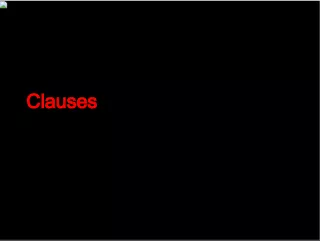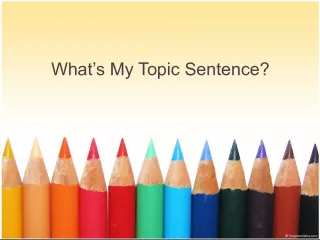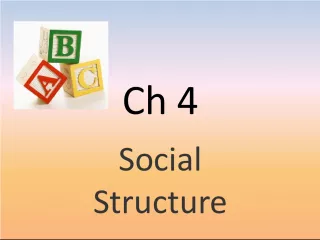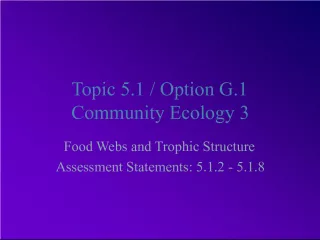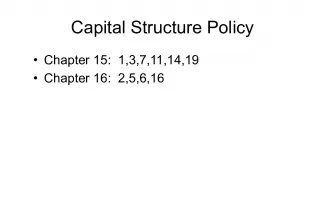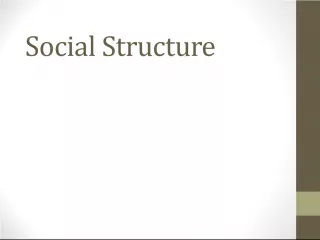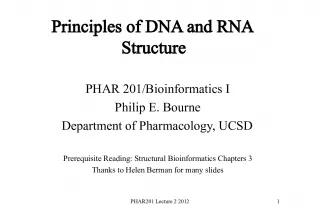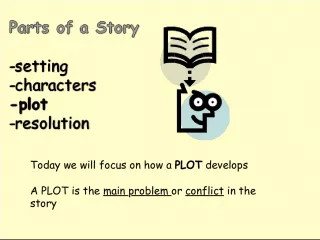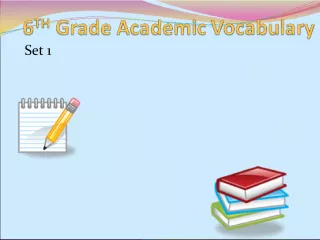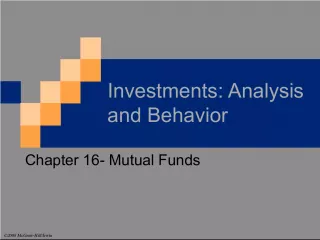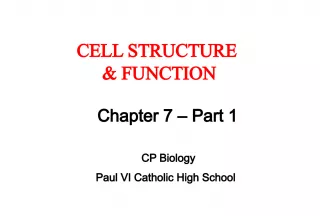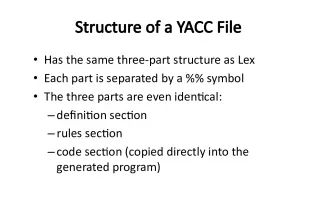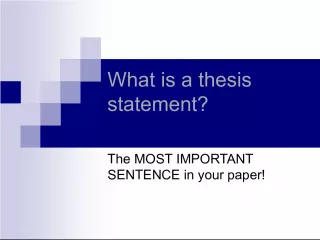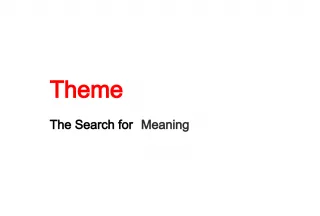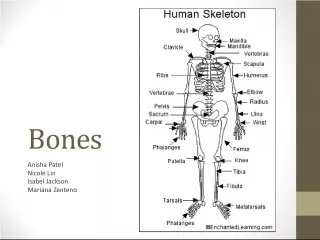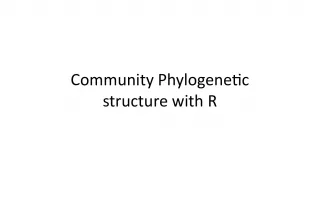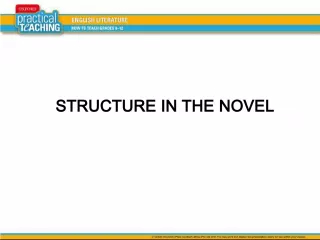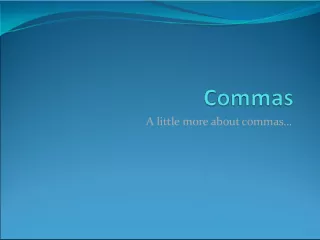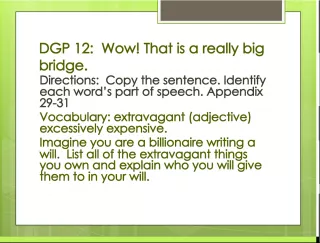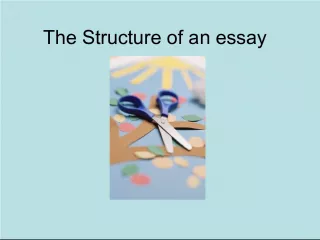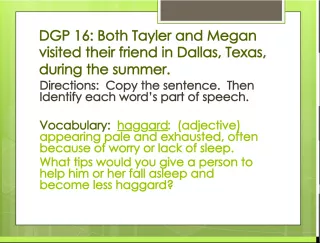Understanding Sentence and Clause Structure
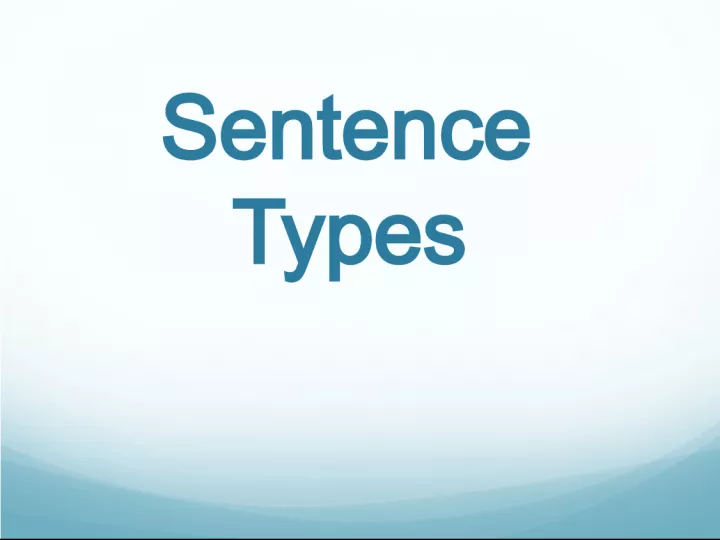

This text provides an overview of the different types of sentences and clauses in English language. It discusses the differences between sentences and clauses, defining them as groups of words that express a complete thought or contain a
- Uploaded on | 6 Views
-
 sharon
sharon
About Understanding Sentence and Clause Structure
PowerPoint presentation about 'Understanding Sentence and Clause Structure'. This presentation describes the topic on This text provides an overview of the different types of sentences and clauses in English language. It discusses the differences between sentences and clauses, defining them as groups of words that express a complete thought or contain a. The key topics included in this slideshow are . Download this presentation absolutely free.
Presentation Transcript
Slide1SentenceTypes
Slide2A sentence can be defined as a group of words expressing a complete thought . A clause is defined as a group of words containing a subject and a predicate .
Slide3Subject and PredicateSubject : The Subject is the part of sentence that shows what the sentence is about, or who or what performs the action . Example : Moby is a robot . In this sentence, “Moby” is the subject . Predicate : The Predicate is the part of the sentence containing the verb and stating something about the subject. Example : Moby is a robot . In this sentence, the predicate would be “is a robot.”
Slide4Independent andDependent Clauses A sentence can be one or more independent clauses or the combination of a dependent clause and an independent clause . An Independent Clause is a group of related words that can stand alone as a complete sentence. Example : I like listening to music. A Dependent Clause is a group of words that cannot stand alone. Example : while I exercise • “while I exercise” cannot stand alone as a complete sentence. It needs to be attached to an independent clause.
Slide5Sentence Types• Simple • Compound • Complex • Compound Complex
Slide6Simple SentenceA Simple Sentence is a sentence consisting of an independent clause with a single or compound (more than one) subject and predicate . Examples : The dog chased the cat. Jane got an A+ on her math and spelling tests. Henry and his brother went swimming and fishing.
Slide7Compound SentenceA compound sentence is a sentence that contains two or more independent clauses combined by one or more coordinating conjunctions or a semicolon . Examples : The dog chased the cat, but the cat got away. This sentence uses “but” to join two independent clauses. Jane is a model student; she got an A+ on her spelling test. This sentence uses a semi-colon to join two independent clauses .
Slide8Coordinating Conjunctions F or A nd N or B ut O r Y et S o
Slide9Compound SentencesTo create a compound sentence, use either a comma and a coordinating conjunction or a semi-colon . Then add another sentence Example : I like reading. I sort of like writing. I don’t like giving oral reports. I like reading, and I sort of like writing, but I don’t like giving oral reports. I love swimming; it’s my favorite sport.
Slide10Commas withCoordinating Conjunctions To join two or more sentences, place a comma at the end of the first complete sentence, add one of the appropriate coordinating conjunctions, and add the next complete sentence. Examples: I am reading Hoot , and my friend is reading The Outsiders . I went to the beach yesterday, but I never went in the water.
Slide11SemicolonsSemicolons ( ; ) can be used to join two complete sentences that share a similar thought . When using a semicolon, you don’t need to capitalize the first letter of the second sentence . Examples : The boy is going home; he intends to stay there. Words like however , therefore , moreover , and nevertheless , can also be used with semicolons. The boy is going home; however , he intends to return soon.
Slide12Complex SentencesA Complex Sentence is a sentence that contains an independent clause and one or more dependent clauses . Examples: Alex likes listening to music while he exercises . Whenever he’s at the gym , Alex likes listening to music while he exercises.
Slide13Subordinating ConjunctionsAfter Although As As if As though Because Before If Since Than Though Till Unless Until When Whenever Where Whereas Wherever While You can begin and/or end your sentence with a subordinating conjunction (dependent clause). You usually won’t need a comma when you place the subordinating conjunction and dependent clause at the end of a sentence. When you begin a sentence with a subordinating conjunction and dependent clause , you will need to place a comma before the independent clause. (just like this sentence)
Slide14Compound ComplexSentences A compound-complex sentence is a sentence with at least two independent clauses and one or more dependent clauses. Examples: Since I started reading Hoot , I’ve been reading it every chance I get, and I’m almost finished with it. Although Officer Delinko sometimes acts like a fool, his heart is in the right place, and he always tries to do what is right.
Slide15Review What is a sentence? What is an independent clause? What is a dependent clause? What is a simple sentence? What is a compound sentence? What is a complex sentence? What is a compound-complex sentence?
